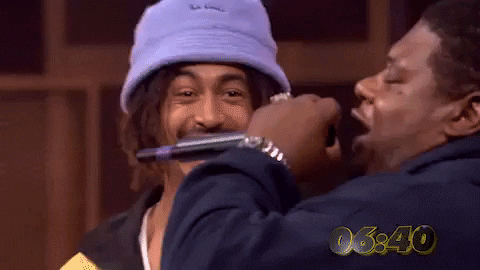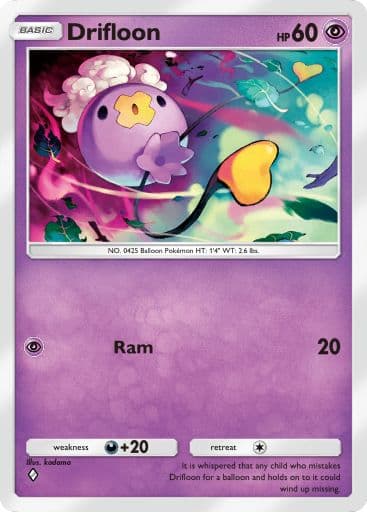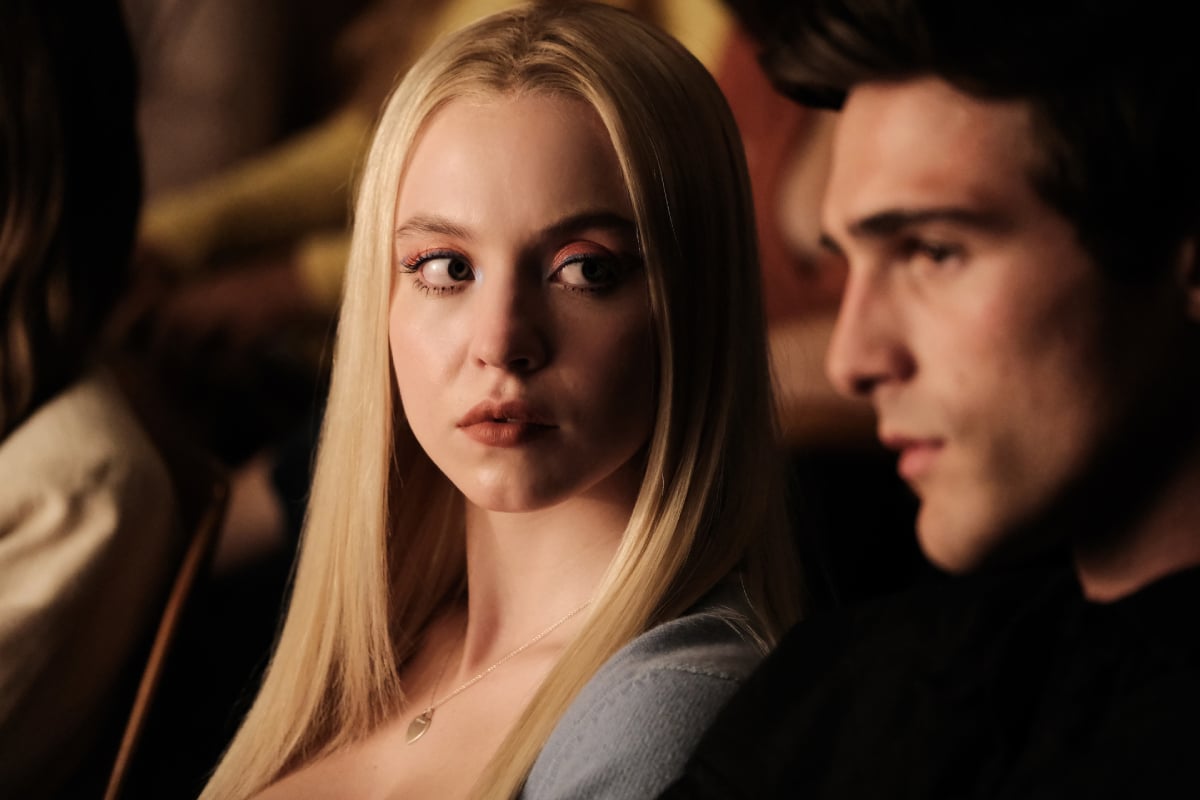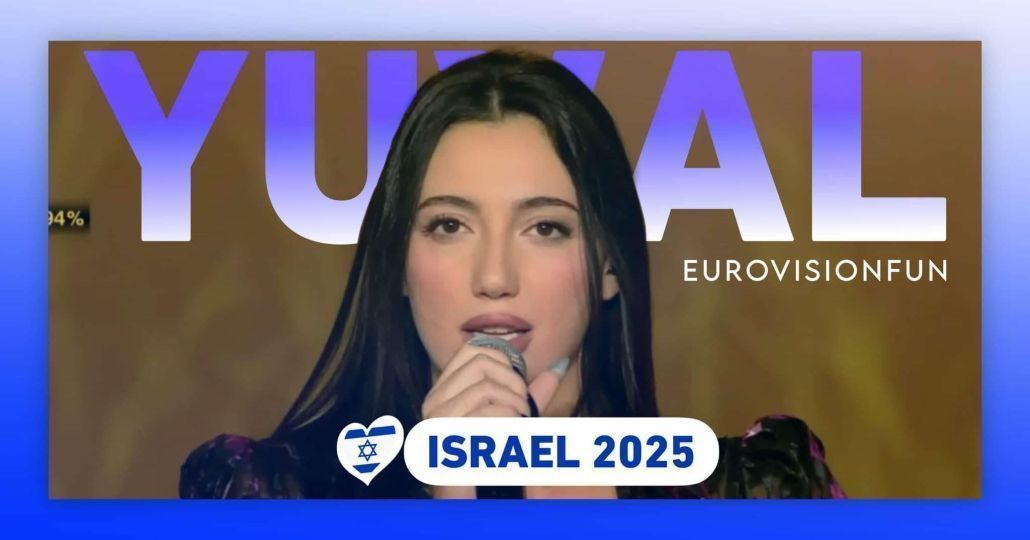Don't Hate The Playaz: A Cultural Analysis Of Hip-Hop Competition

Table of Contents
The Roots of Hip-Hop Rivalry: From Block Parties to Billboard Charts
The seeds of hip-hop competition were sown in the vibrant block parties of the Bronx in the 1970s. Early hip-hop wasn't just about music; it was about showcasing skills and pushing boundaries. This competitive spirit, a fundamental aspect of hip-hop culture, wasn't born from malice, but from a desire to express oneself and one-up others creatively.
- Early DJ battles: These weren't just about playing records; they were strategic showdowns, DJs vying for control of the crowd with innovative scratching, mixing, and beat juggling techniques. This established a foundational competitive framework for the entire genre.
- The emergence of MC battles: As DJs laid the rhythmic groundwork, MCs stepped up, using their lyrical skills to battle for supremacy, showcasing quick wit, clever wordplay, and commanding stage presence. These battles, often spontaneous and improvisational, became central to hip-hop culture.
- The role of graffiti art and breakdancing: Beyond music, graffiti artists competed for the most creative and visible tags, and b-boys and b-girls battled in breakdancing cyphers, showcasing their physical prowess and unique styles. All these elements contributed to the competitive DNA of hip-hop.
- Laying the groundwork: These early competitive elements – DJ battles, MC clashes, graffiti throwdowns, and breakdancing cyphers – weren't just isolated events; they laid the groundwork for the complex and multifaceted rivalries that characterize modern hip-hop.
This early competitive spirit has evolved and intensified, significantly influencing the modern hip-hop landscape.
Fueling Innovation: How Competition Drives Artistic Growth in Hip-Hop
The pressure cooker of hip-hop competition consistently pushes artists to refine their skills and create more innovative music. The desire to stand out, to outshine rivals, fuels artistic growth in remarkable ways.
- Lyrical advancements: The pressure to deliver the most impactful and original rhymes has driven lyrical advancements, pushing the boundaries of wordplay, storytelling, and flow. Rappers constantly strive for technical proficiency, pushing the limits of rhyme schemes and delivery.
- Examples of artists: The rivalry between Eminem and Ja Rule, for instance, spurred both artists to release some of their most memorable and commercially successful works, demonstrating how competitive pressures can fuel artistic output. Similar rivalries throughout hip-hop history have yielded similar results.
- Diss tracks: Diss tracks, a unique aspect of hip-hop competition, serve as a potent platform for lyrical innovation. These songs, often filled with pointed barbs and clever insults, have pushed the boundaries of creativity and challenged artists to hone their lyrical skills. They represent a key mechanism for driving creative growth.
- Evolution of subgenres: Competition also drives the evolution of hip-hop subgenres. Artists constantly strive to innovate, pushing boundaries and creating new sounds and styles to differentiate themselves from rivals, leading to the birth and evolution of styles like trap, conscious hip-hop, and others.
While competition can be fierce, it's often a catalyst for remarkable artistic growth within the hip-hop community.
Community and Identity: Hip-Hop Competition as a Social Construct
Beyond individual artistry, hip-hop competition fosters a powerful sense of community and shared identity. Supporting a favorite artist or crew becomes a way to express belonging and affiliation.
- Unifying power: Competition creates strong bonds among fans, unifying them around shared preferences and beliefs. The collective experience of supporting a winning artist or team strengthens social connections and generates a strong sense of community.
- Regional styles and rivalries: Competition helps define regional styles and rivalries. Different cities and regions develop their own unique hip-hop sounds and aesthetics, often leading to healthy competition and creative cross-pollination.
- In-group/out-group dynamics: The competitive nature of hip-hop inevitably creates in-group/out-group dynamics. Fans passionately support their chosen artists and crews, and this dynamic, though sometimes fraught with tension, fosters a sense of shared identity and strengthens community ties.
- Social media's impact: Social media has amplified and transformed this sense of community and rivalry, creating platforms for engagement, debate, and even conflict. The instantaneous nature of online interactions has both intensified and expanded the reach of hip-hop competition.
Competition, therefore, doesn’t just drive artistic innovation but also strengthens social bonds within the hip-hop community.
The Dark Side of Competition: Addressing Negativity and Conflict
While competition is a driving force in hip-hop's success, it also carries potential downsides. Negativity, violence, and the spread of misinformation can be significant consequences of unchecked rivalry.
- Violence and harm: Sadly, instances exist where hip-hop competition has escalated to violence and harm. These instances underscore the need for responsible engagement and de-escalation strategies.
- Social media amplification: Social media platforms often amplify conflict and negativity, turning disagreements into public battles and fostering an environment of online bullying and harassment.
- Responsible engagement: Constructive criticism and respectful debate are crucial for fostering a healthier hip-hop environment. Learning to engage in competition without resorting to personal attacks or harmful behavior is essential.
- Fostering a supportive environment: Promoting initiatives that encourage collaboration and mutual respect can help build a more positive and supportive competitive landscape.
While acknowledging the darker aspects, a focus on responsible competition is crucial for the future of hip-hop.
Conclusion
Hip-hop competition is a multifaceted phenomenon that has profoundly shaped the genre's trajectory. From its humble beginnings in block parties to its current global dominance, the drive to excel has fueled artistic innovation, fostered strong community bonds, and even sparked controversy. While the potential for negativity exists, a balanced perspective highlights the significant role of competition in the continued evolution and success of hip-hop. Understanding this complex dynamic is key to appreciating the rich cultural tapestry of the genre. Let's continue to celebrate the energy and artistry of hip-hop, while embracing a more constructive and respectful approach to hip-hop competition. Engage responsibly, and keep the spirit of friendly competition alive — don’t hate the playaz!

Featured Posts
-
 Charizard Ex A2b 010 Deck Guide Strategies And Effective Counters For Pokemon Tcg Pocket
May 14, 2025
Charizard Ex A2b 010 Deck Guide Strategies And Effective Counters For Pokemon Tcg Pocket
May 14, 2025 -
 Euphoria Season 3 First Look At Cassies Wedding In New Set Photos
May 14, 2025
Euphoria Season 3 First Look At Cassies Wedding In New Set Photos
May 14, 2025 -
 Descubre Las Euforias Deleznables Placer Y Bienestar
May 14, 2025
Descubre Las Euforias Deleznables Placer Y Bienestar
May 14, 2025 -
 Staten Island Eatery From Local Favorite To Netflix Hotspot
May 14, 2025
Staten Island Eatery From Local Favorite To Netflix Hotspot
May 14, 2025 -
 Yuval Raphaels Second Eurovision Rehearsal A Cultural Highlight For Israel
May 14, 2025
Yuval Raphaels Second Eurovision Rehearsal A Cultural Highlight For Israel
May 14, 2025
